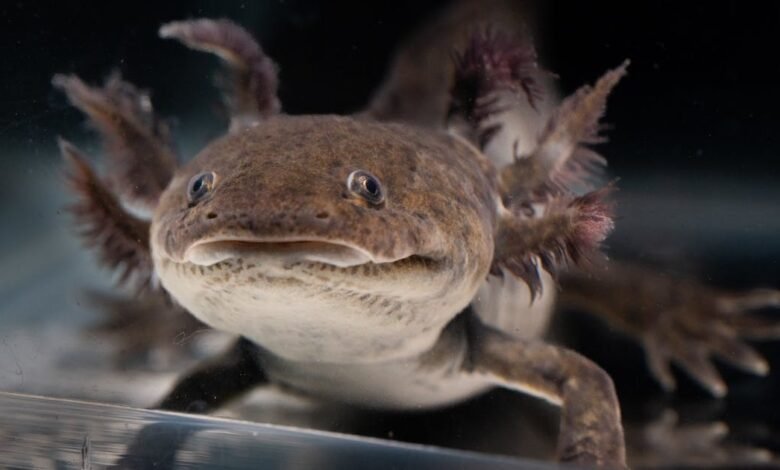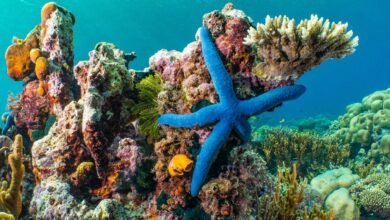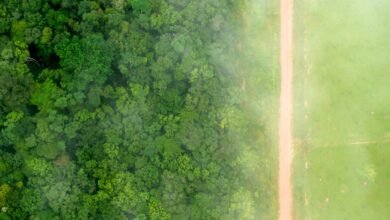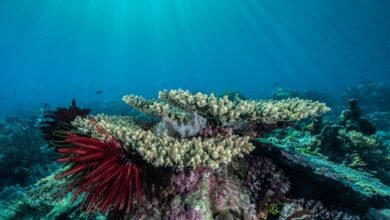Axolotls are on the brink. Can we bring them back?

An ancient wetland system of islands and canals that pre-dates the Aztecs endures quietly in Mexico City.
These wetlands, cradled within North America’s most populous city, are the only place on Earth where you can find one of the most recognizable — and endangered — creatures on the planet: the axolotl.
Now, a new survey has confirmed what scientists and locals have feared: The charismatic salamander is nearing extinction in the wild, driven by habitat loss, pollution and the introduction of invasive fish that prey on it.
Led by the Ecological Restoration Laboratory of the National Autonomous University of Mexico (UNAM), with support from Conservation International-Mexico, the survey is the most comprehensive effort of its kind, covering 115 monitoring sites across the 2,500-hectare (6,180-acre) Xochimilco Protected Area, a UNESCO World Heritage Site known for its canals and farm islands, called chinampas.
For the first time, researchers used traditional fishing nets as well as environmental DNA (eDNA) to track the presence of the notoriously elusive amphibian.
Although no axolotls were captured with the nets, eDNA testing, which captures traces of animals’ genetic material in water, soil or even air, revealed that axolotls are still present in the canals.
Researchers used both traditional nets and eDNA during the survey. No axolotls were found using the nets.
Further reading: What on Earth is ‘eDNA’?
“Unlike previous surveys, this time we included environmental DNA to better understand where axolotls are surviving and how their habitat is changing,” said Luis Zambrano, director of the UNAM lab and lead researcher on the census. “Habitat degradation is pushing axolotls to the brink of extinction. Their future and the health of Xochimilco depend on sustained investment in chinampa farming, local leadership, and a new approach to urban living that embraces nature.”
EDNA, extracted from water samples, revealed axolotls are still present in the canals. © Víctor Martínez
While the results are far from a call for celebration, they may offer a glimmer of hope for the future of axolotls in Xochimilco’s wetlands — if restoration is prioritized.
Once abundant, axolotl populations are a flicker of what they used to be. In 1998, there were an estimated 6,000 axolotls per square kilometer. By 2014, the last time the survey was conducted, that number had dwindled to just 36 per square kilometer — a 99 percent decrease.
Axolotls are extremely sensitive to changes in water quality, temperature, salinity and food. As Xochimilco’s wetlands have been battered by the overuse of pesticides in modern farming and invasive species like carp and tilapia — which are not only axolotls’ main predators, but also compete for food, shelter and breeding areas — axolotl’s numbers have followed course.
In response, local farmers and scientists have teamed up to reverse the trend.
A local farmer works on his chinampa.
“We can’t save axolotls without restoring their habitat,” said Esther Quintero, a biologist at Conservation International-Mexico. “That means working hand in hand with the people who live and farm in these wetlands every day. Restoring Xochimilco is not just a scientific or ecological challenge — it’s a chance to rethink how we live in cities and make space for nature to thrive alongside us.”
Using a restoration model known as chinampa-refuge, developed by UNAM and local farmers, Conservation International is helping the farmers blend ancestral farming techniques like the farm islands with modern science, as well as supporting a new generation of farmers who are committed to protecting Xochimilco.
An aerial view of the chinampas of Xochimilco
These chinampa-refuges are a sanctuary for axolotls. Biofilters, made from wood, gravel and native plants, clean the water and block invasive predators from entering the designated canals. As a result of the biofilters, water quality has improved, invasive species have declined, crop yields have increased, and native fish such as the Chapultepec splitfin and the Shortfin silverside have returned.
Twenty-one chinampa-refuges currently dot Xochimilco’s wetlands, with more planned in the coming year. These farm islands, if scaled up, have the potential to produce up to a quarter of the flowers and vegetables purchased in Mexico City. And the wetland’s benefits extend beyond agriculture, helping to control flooding, regulate the city’s climate and buffer against extreme weather.
In September, a second, larger phase of the census will enable researchers to compare results with the 2014 census. In the meantime, Conservation International-Mexico, the researchers and farmers are focused on raising public awareness about the importance of Xochimilco — to axolotls and to Mexico City.
“Finding traces of axolotls gives us hope to continue restoring their habitat — a task that must involve all of society,” Zambrano said.
To bring axolotls back, researchers say the entire ecosystem must be restored.
Mary Kate McCoy is a staff writer at Conservation International. Want to read more stories like this? Sign up for email updates. Also, please consider supporting our critical work.
Source link









